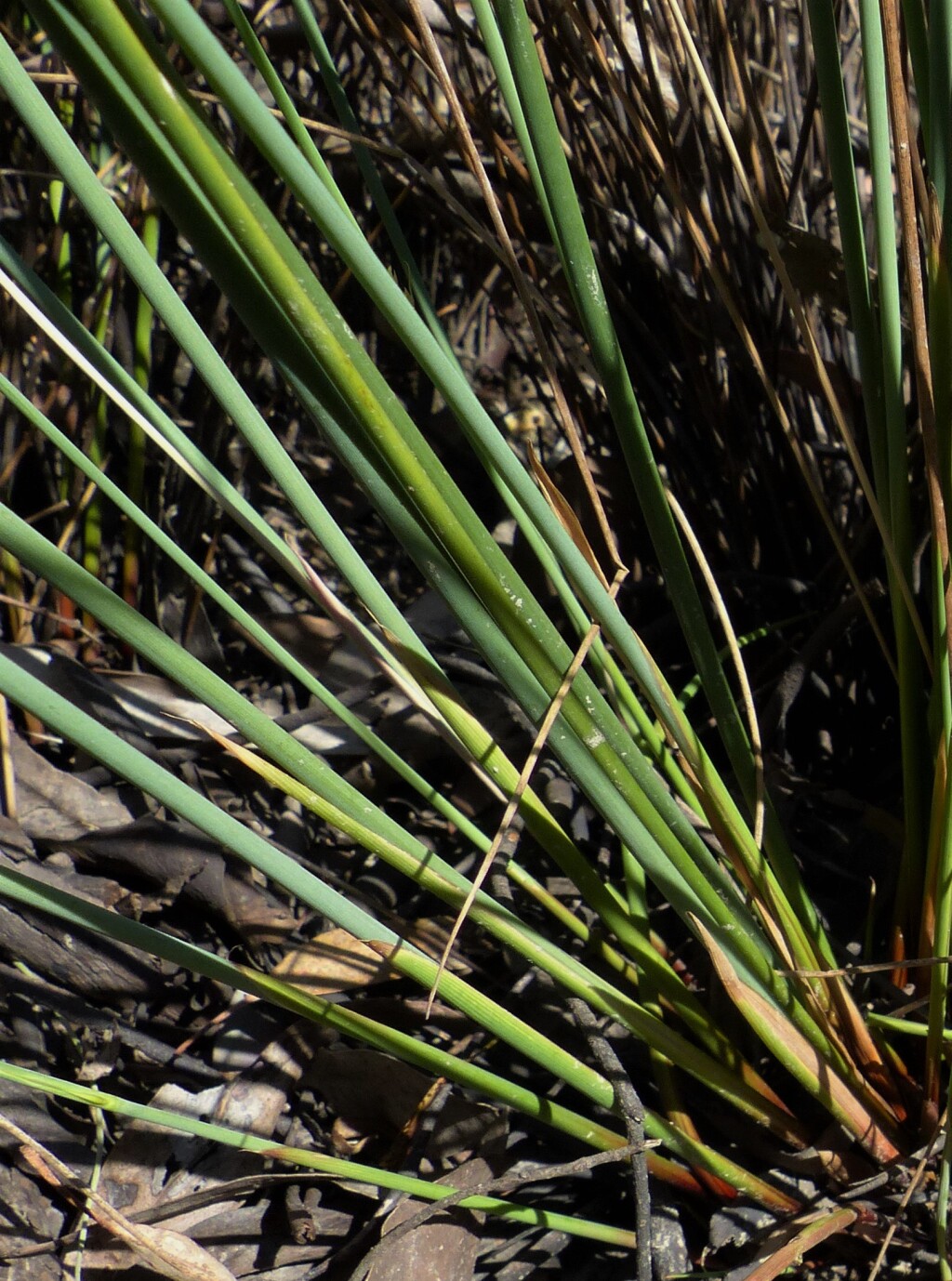Juncus amabilis
EdgarTypically a densely tufted perennial with horizontal or ascending rhizomes. Cataphylls tight or loose, dark brown, dark reddish-brown or dark purplish-brown towards the base, to c. 22 cm long. Culms erect, usually dull greyish-green or occasionally dull green, 20–120 cm high and (0.6-)1.0–2.5 mm diam.; striations fine, 30–80, moderately strongly raised and fairly crowded; pith interrupted, air spaces large; stomates superficial. Inflorescence variable, with flowers typically aggregated into one to many ± sub-globular clusters, the clusters close or distant, or occasionally the flowers scattered; primary bract continuous with culm, to c. 40 cm long; prophylls present. Tepals with a green or faintly reddish-tinged midrib, margins ± faintly reddish-tinged, acute to acuminate, 1.5–2.5(–3.0) mm long; stamens 3(–4), anthers 0.4–0.7 mm long. Capsules with a reddish-brown obtuse to subacute apex, exceeding or occasionally equal to the tepals, (1.8–)2.0–2.5 mm long. Flowers mostly Nov.–Dec, seeds shed mostly Dec.–Apr.
LoM, MuM, Wim, GleP, VVP, VRiv, MuF, GipP, OtP, WaP, Gold, CVU, GGr, DunT, NIS, EGL, EGU, WPro, HSF, HNF, OtR, Strz, MonT, VAlp. Also WA, SA, NSW, Tas. Apparently introduced in New Zealand. A variable species of seasonally damp sites throughout much of Victoria, uncommon in Eastern Highlands and East Gippsland.
Closely resembles Juncus australis, J. gregiflorus and J. usitatus. In most cases, the key characters should enable J. amabilis to be distinguished from these species; however, without the knowledge of fresh culm colour separation from J. gregiflorus may be difficult and require careful examination of anatomical characters not provided in this account. Plants from some more southern localities (e.g. French Is., Koo-wee-rup, lower Glenelg River, Garvoc, Frankston) tend to have inflorescences that are much reduced and usually consist of one or few dense clusters, larger tepals (to 3 mm long) with faint reddish bands on the margins, and capsules that equal or slightly exceed the tepals. Fine-culmed plants of this form have been confused with J. filicaulis, but differ from that species in the more numerous culm striations, more open pith, and darker cataphyll bases. Hybrids with J. aridicola, J. gregiflorus, J. pallidus, J. remotiflorus, J. sarophorus, J. semisolidus, J. subsecundus and J. usitatus are known.
Albrecht, D.E. (1994). Juncus. In: Walsh, N.G.; Entwisle, T.J., Flora of Victoria Vol. 2, Ferns and Allied Plants, Conifers and Monocotyledons, pp. 197–233. Inkata Press, Melbourne.
 Spinning
Spinning



